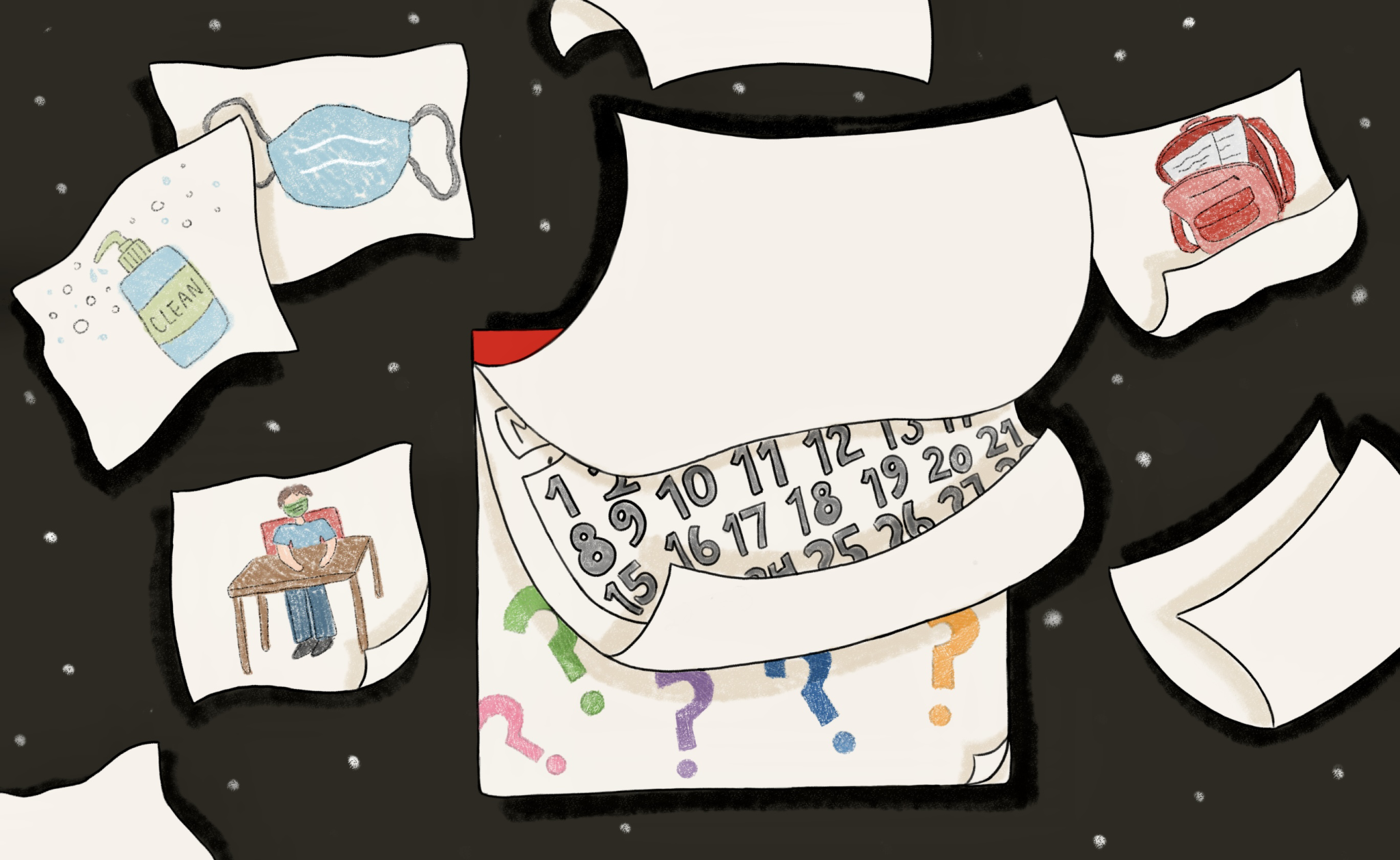The pandemic has exacerbated issues of transparency at Berkeley High School (BHS), and the communication surrounding the hybrid learning plan illustrates this problem. Ever since the announcement that BHS would be returning to hybrid instruction in early April, students have received a wide range of conflicting messages about the scheduling of the return.
Originally, concrete plans were unavailable due to ongoing negotiations between the Berkeley Federation of Teachers (BFT) and Berkeley Unified School District (BUSD). After an agreement in mid-February, a tentative schedule was drafted and planning accelerated. Before the plan became official, the information flow was uncertain. Discussion often happened at school board meetings, which meant that many students and their families were out of the loop.
Although school board meetings were open to all, only a specific demographic with the time and resources available attended. When decisions and resolutions weren’t well announced outside of the meetings, many students didn’t have access to information about the structure of hybrid learning. As a result, students were unclear about if they should sign up for in-person classes, or if their teachers were offering them at all. Information disparities persisted even within the student body based on grade, parent engagement, access to resources, and classes.
Students received conflicting information from a variety of sources. Some learned about the hybrid learning schedule from emails, others through teachers, clubs, leadership, friends, and parents. Because the information was being given out before plans were finalized, teachers often had different versions of the plan than administrators and parents, which only amplified confusion. Additionally, the influx of emails from administrators was overwhelming and often discouraged students from trying to access updated information.
Students officially received the hybrid learning plan on April 3 via an email from BHS Principal Juan Raygoza. While this cleared up many questions, some confusion still persisted. Students with morning lab periods for their science classes were unsure about when they should arrive, and students with afternoon labs were uncertain about their time slot altogether. Communication regarding what stable groups would entail was lacking, and many students were confused about how extracurricular activities fit into the schedule.
To combat this confusion, administrators need to focus on unified information dissemination. In addition to weekly emails, administrators should turn to social media. The inboxes of BHS students are flooded with emails every day, and individual COVID-19 updates can be easily lost. By utilizing social media platforms like Instagram, information can be shared in a more unified and accessible format. It is essential that Associated Student Body (ASB) leadership accounts are utilized during this uncertain time.
In the future, transparency needs to take precedence. The communication surrounding COVID-19 cases within the BHS basketball team was the first step in the right direction. Information traveled efficiently and effectively; the email was concise, details were available through the BHS website, and confusion was generally avoided. Those triumphs must continue in the upcoming days, and social media should be at the forefront of the charge. With a variety of platforms and unified messaging, the transition to Hybrid Learning can be successful.





